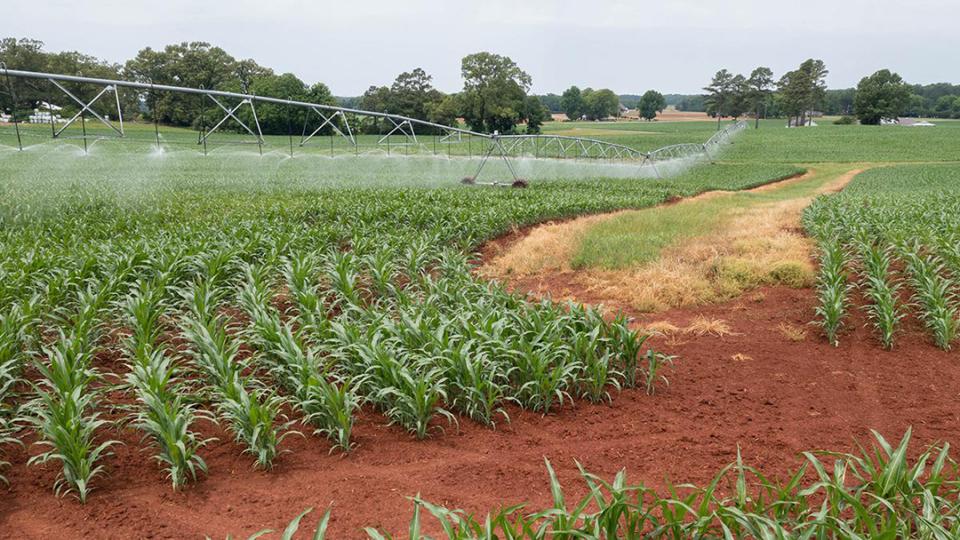
The Economics of Deficit Irrigation Utilizing Soil Moisture Probes
According to the United States Department of Agriculture Economic Research Service (USDA-ERS, 2018), 80% of the water consumed in the United States is used to irrigate agricultural crops. The techniques used to irrigate have shifted from gravity systems to pressure-sprinklers, notably in the form of center-pivot irrigation systems (Colaizzi et al., 2009). Center-pivot systems use irrigation water more efficiently than earlier irrigation methods, and these systems have allowed output to increase even though the amount of water applied has not grown significantly (USDA-ERS, 2018). However, Spencer and Altman (2010) argue that current water use, particularly in the arid western states, is not sustainable because of climate change and growing water demand. According to a report by the U.S. Geological Survey (2003), groundwater depletion is widespread across the United States, leading to lower water tables, and increased pumping costs, land subsidence, reduced amounts of water in streams and rivers, and adverse effects on water quality. Effective irrigation management is critical for future food supplies and sustainable farming systems.
The efficient use of scarce water resources is critical for agriculture, particularly for the prosperity of producers in the arid parts of the United States. New technology plays an important role in improving water use efficiencies. Simultaneously, research must be updated using both technological and methodological advancements to understand resulting economic outcomes.
Deficit irrigation represents an important concept in managing water use through irrigation (Hargreaves and Samani 1984; Martin, Brocklin and Wilmes 1989; English 1990). Research on deficit irrigation has spanned across a wide range of applications (Galindo et al. 2018; Expósito and Berbel 2020), has focused corn production (Payero et al. 2006; Klocke et al. 2011), and for recent work that focuses on corn production with an economic component, has continued to advance the deficit irrigation concept (Trout and Manning 2019). To understand the potential value of deficit irrigation, one must understand the yield response to water and the economic impact of yield reductions (English, 1990).
Goal and Objectives
In this study, we determine the economic value of deficit irrigation management using both technological and methodological advancements. The use of soil moisture probes represents the technological improvement. We provide improvements in the methodology as follows. Regarding data, we employ a field-size study, instead of plots, where the irrigation decision is determined by the moisture level in the soil measured through a soil moisture probe. Regarding the understanding of the yield response to water, although we examine the commonly used quadratic function, we improve upon this specification by also examining an alternative response function, the linear response stochastic plateau. Our objectives are to identify the financial impact on producers of reducing water use by increasing irrigation costs, reducing irrigation amounts, the role of changes in corn prices, and extreme weather events on the profitability of irrigating corn under a deficit irrigation strategy.
Continue this article on the Center of Agricultural Profitability.
Online Master of Science in Agronomy
With a focus on industry applications and research, the online program is designed with maximum flexibility for today's working professionals.
